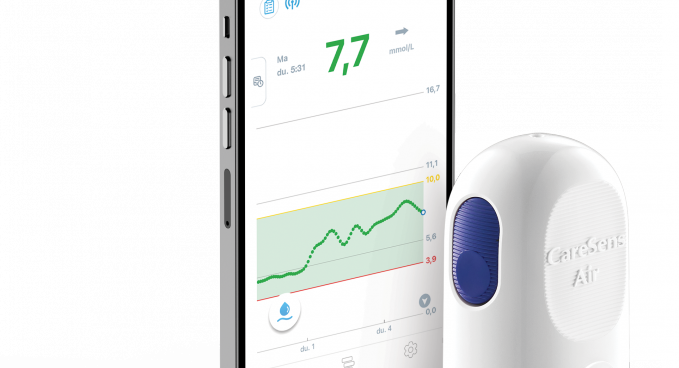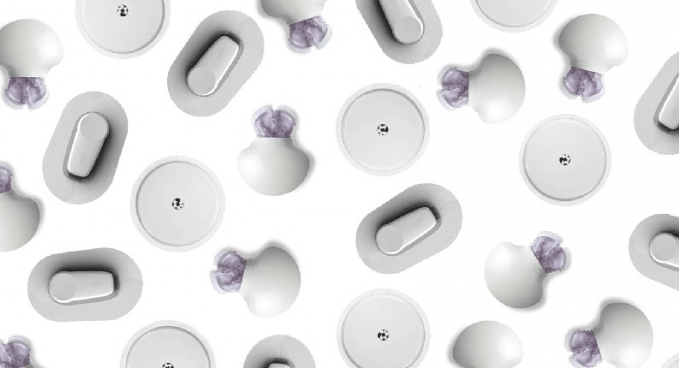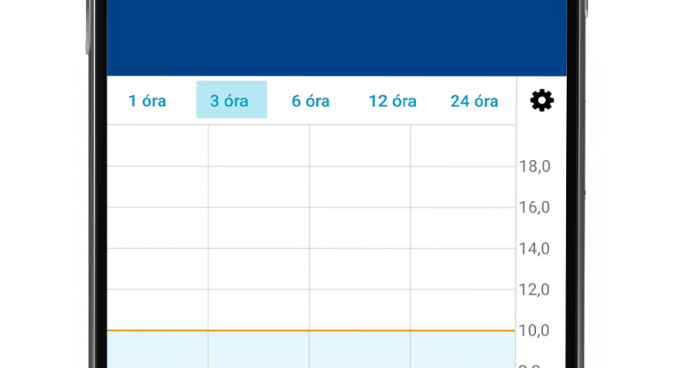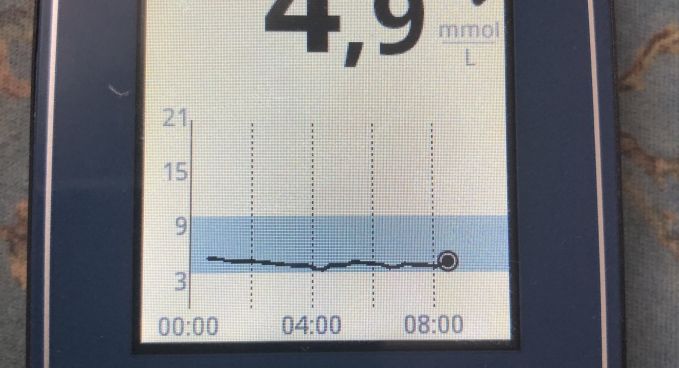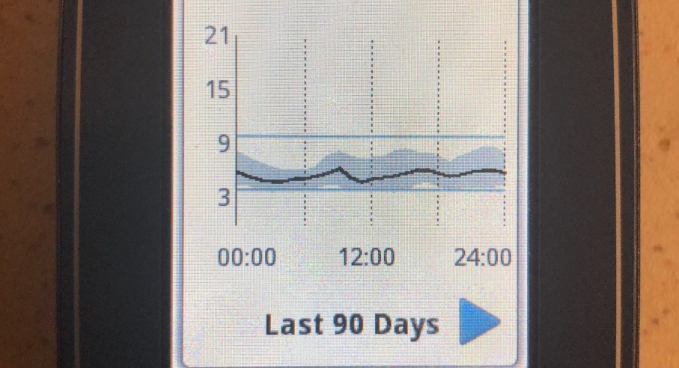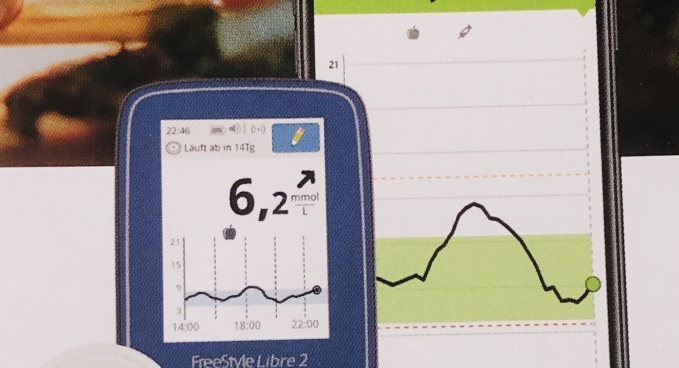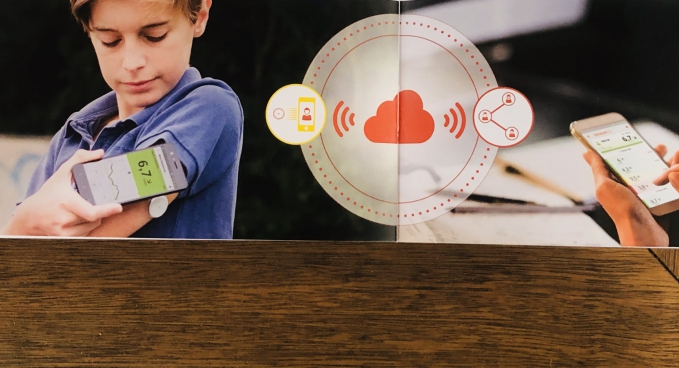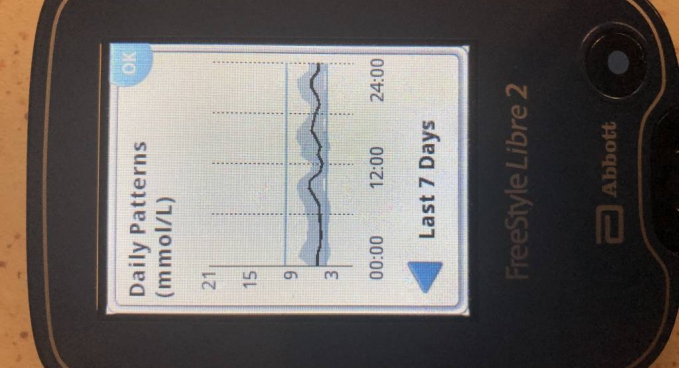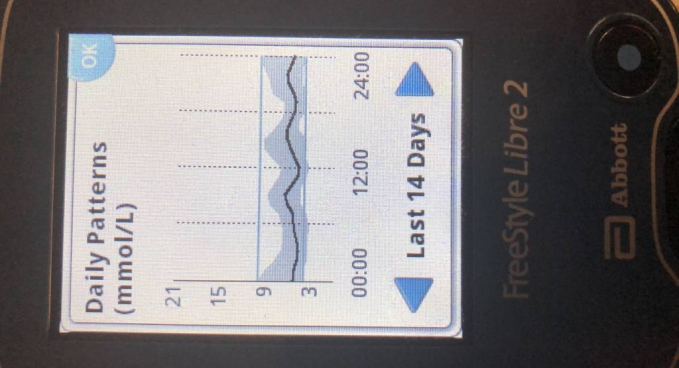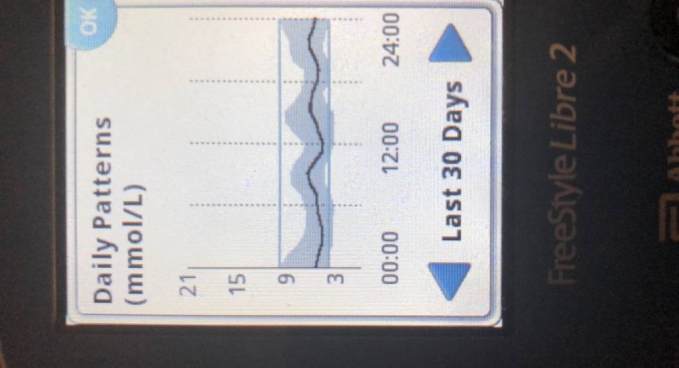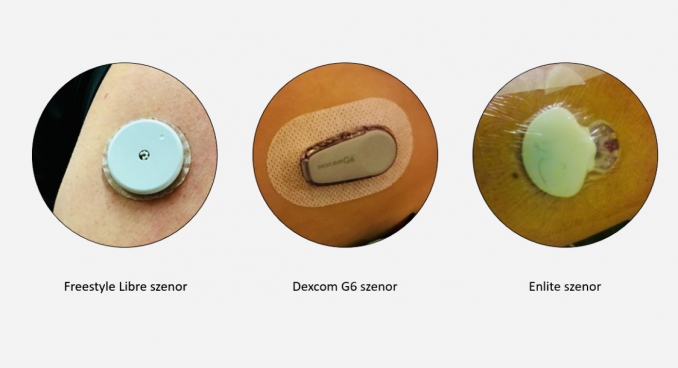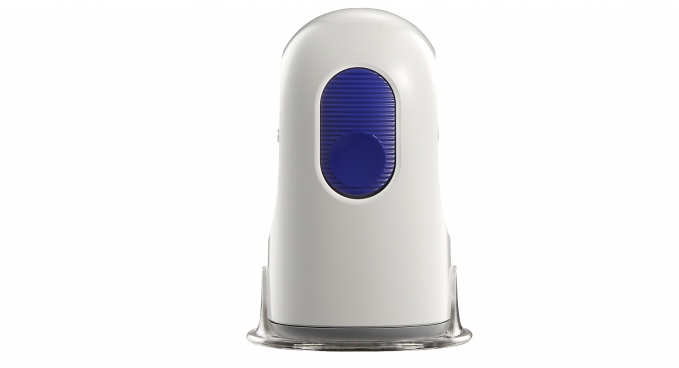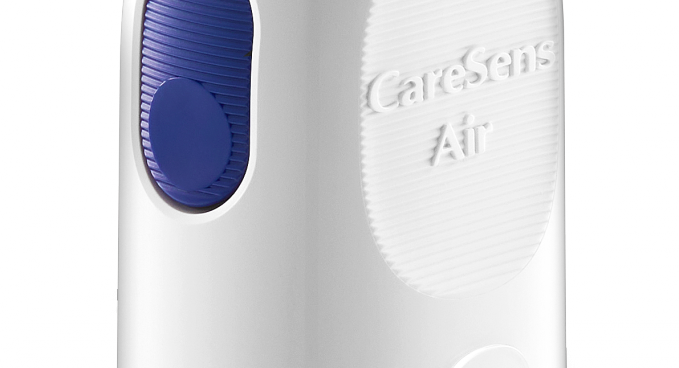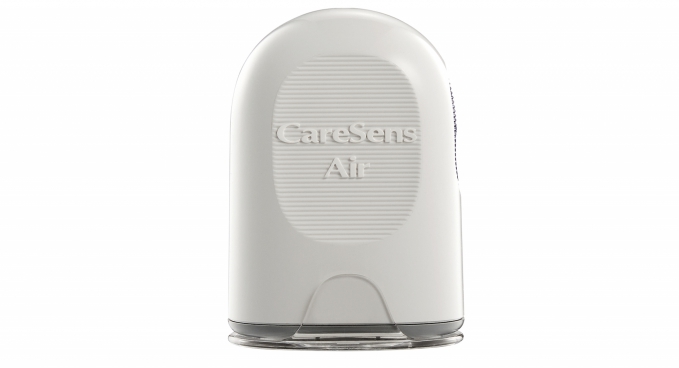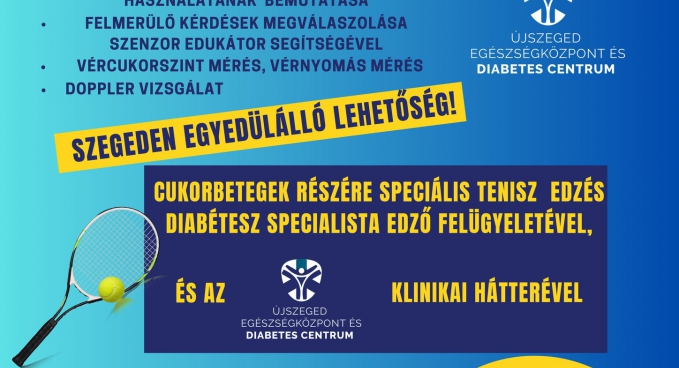Innovative Diabetology
The new Continuous Glucose Monitoring System (CGMS) has been introduced in Hungary, with our center being the exclusive location in Southern Hungary to offer this innovative technology. This system is revolutionizing diabetes care in a way similar to how fingerstick glucose meters transformed management practices one or two decades ago.
A Look Back in Time
The first insulin became available in 1922, during which blood sugar levels could only be measured through blood draws. The first blood glucose meter was introduced to the market in 1986.
What is a Continuous Glucose Monitoring System (CGMS)?
The Continuous Glucose Monitoring System continuously measures glucose concentrations in interstitial fluid using a sensor coated with glucose oxidase enzyme, which interacts with the subcutaneous fatty tissue. By monitoring glucose levels in real time, the system predicts blood sugar fluctuations, helping to prevent both high and low glucose levels and making diabetes management more effective.
Read more about sensors in our news section here.
Life-Saving Benefits of CGMS
Calling these sensors life-saving is no exaggeration. By preventing dangerously low or high glucose levels, they can bring a diabetic patient's glucose metabolism closer to that of a healthy individual while allowing for greater freedom in daily life. A significant milestone in Hungary is that these devices are now readily available, with ongoing professional support for users.
Since May 2024, the newest sensor, the CareSens Air by i-Sense, has been available. This sensor uniquely measures glucose every 5 minutes for up to 15 days continuously and is distributed in Hungary by 77 Elektronika Kft.
Accessibility and Affordability
Since 2022, most CGMS devices have been available with financial support for type 1 diabetes patients. Children under 18 and full-time university students can receive 98% support, while others can access the devices with 80% support. Additionally, a one-month free trial allows patients to experience the benefits before purchasing.
Comparison of CGM and Blood Glucose Monitoring (BGM)
Traditional blood glucose meters (BGM) provide a snapshot of blood sugar at a specific moment, requiring users to measure consciously at set times. In contrast, CGMS offers continuous glucose data without user intervention, sending updates to an application for real-time monitoring and analysis.
Advancing Diabetes Management in the 21st Century
Modern diabetes management involves multiple pillars: nutrition, exercise, continuous glucose monitoring, and personalized medical treatment. These advances enable a lifestyle closer to that of healthy individuals, reducing dietary restrictions and supporting safe physical activity without the risk of hypoglycemia. CGMS devices allow precise, individualized treatment, resulting in near-normal glucose metabolism.
CGMS Adoption in Hungary
Although Hungary is still in the early stages of adopting advanced diabetes care, two types of CGMS devices are now supported. CGMS is particularly vital for type 1 diabetes patients due to the complete lack of insulin production and the high risk of hypoglycemia or hyperglycemia. It is also beneficial for gestational diabetes during pregnancy, ensuring safe outcomes for both mother and child.
Global and Local Innovations
First approved in the U.S. in 1999, CGMS technology has continually improved in accuracy and usability. These systems typically include a sensor, a transmitter, and a device for data display, such as a smartphone. Sensors can now function for up to 90 days, though such long-lasting models are not yet available in Hungary.
In Hungary, the Medtronic Enlite sensor is supported and widely available. Patients who qualify for subsidies can obtain it at a significantly reduced cost, with comprehensive training provided by centers like ours.
Practical Advantages of CGMS
CGMS systems greatly reduce the number of fingerstick tests required, providing convenience and improving quality of life. For example, Medtronic's supported sensor requires weekly calibration but offers reliable data for effective diabetes management. Data can be shared with multiple devices, allowing family members or caregivers to monitor glucose levels remotely.
Expert Support and Recommendations
Our center is accredited by the Hungarian Diabetes Society, and we provide comprehensive assistance to patients adopting these systems. Our experience demonstrates that proper use of CGMS can maintain blood glucose within healthy ranges up to 98–99% of the time, achieving HbA1c levels of approximately 5.5%.
The clear benefits of CGMS include safety, convenience, and the ability to live a life closer to that of non-diabetics. We strongly recommend exploring these devices to improve diabetes management and overall quality of life.
Normal range and recommendations
The normal range for HbA1c is between 4% and 6%. According to European and American guidelines, an HbA1c level below 7% is considered well-managed diabetes for both type 1 and type 2 diabetes. However, a level closer to 6% aligns more closely with the metabolic profile of healthy individuals. Thanks to these innovative devices, it is now ensured that favorable HbA1c levels are not merely the result of averaging numerous hypoglycemic (below 3.9 mmol/L) and hyperglycemic (above 11 mmol/L) readings.
Advancements in sensor technology
Initially, these sensors operated for 6–7 days, while the latest models now provide continuous data for up to 90 days. However, this most recent technology is currently unavailable in Hungary.
The supported device available in Hungary is Medtronic's Enlite sensor. It is the responsibility of diabetologists to assess whether a patient meets the criteria for receiving this highly subsidized device. At Újszeged Diabetes Center, we emphasize providing seamless access to these devices, including comprehensive guidance and training for independent, expert use. Our team has extensive hands-on experience with these continuous glucose monitoring devices, further solidifying the center’s status as an accredited care provider by the Hungarian Diabetes Association.
Usage and practical aspects of the Medtronic sensor
The Medtronic sensor is designed to monitor glucose levels in the tissue for 7 days per session. Application is relatively simple, involving a specialized "inserter." While the patient can apply the device independently with some practice, assistance from another person is often helpful. To secure the sensor, a hypoallergenic adhesive such as Mepore Film is recommended, ensuring the sensor stays in place during daily activities like sports or swimming. Placement is typically on the upper arm or abdomen, as these areas are less prone to movement.
After seven days, the transmitter must be recharged, which takes 30–50 minutes. With some practice, it is possible to remove the transmitter without dislodging the sensor, allowing for a reset that often yields accurate readings for an additional three days. Calibration is required two hours post-application and typically involves a fingertip blood glucose reading recorded on the connected smartphone. Subsequent calibrations are needed every 6 hours initially, then every 12 hours, ensuring the device remains operational. While this schedule may occasionally disrupt sleep, the overall need for fingertip blood tests is significantly reduced.
Advantages and cost considerations
The Medtronic sensor has several benefits, including fewer fingertip tests compared to traditional monitoring methods. Without subsidies, the initial cost of the transmitter and charger is approximately 200,000 HUF. However, for eligible patients, subsidies reduce the cost to around 35,000–40,000 HUF. A mid-range smartphone is required for data retrieval. The device also enables seamless data sharing via a smartphone app, making it particularly useful for children or newly diagnosed type 1 diabetes patients.
Alternative devices: FreeStyle Libre and Dexcom
The FreeStyle Libre sensors, available in certain European countries, are smaller, easier to apply, and operate for up to 14 days. They offer similar benefits, such as real-time data tracking and minimal calibration requirements. The Dexcom sensors, while more costly, are considered the most accurate based on scientific studies. However, personal experience with these models is limited due to their higher price and limited availability in Hungary.
Conclusion
Continuous glucose monitoring systems represent a significant advancement in diabetes care, offering patients better metabolic control, enhanced safety, and an improved quality of life. At Újszeged Diabetes Center, we strongly recommend trying these innovative solutions, especially for patients looking to optimize their therapy, gain greater freedom in their daily lives, and achieve a healthier lifestyle.


